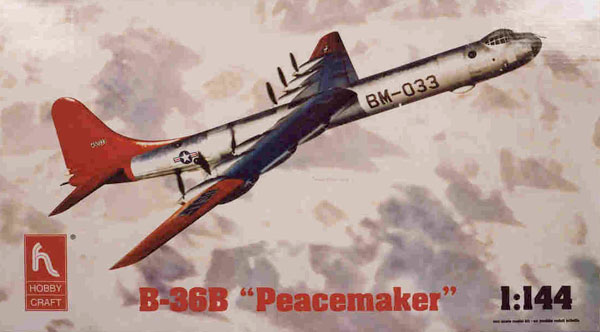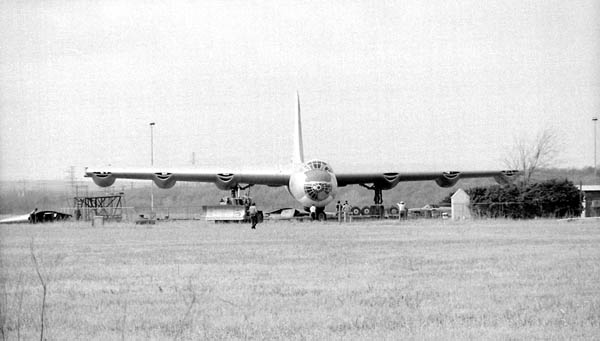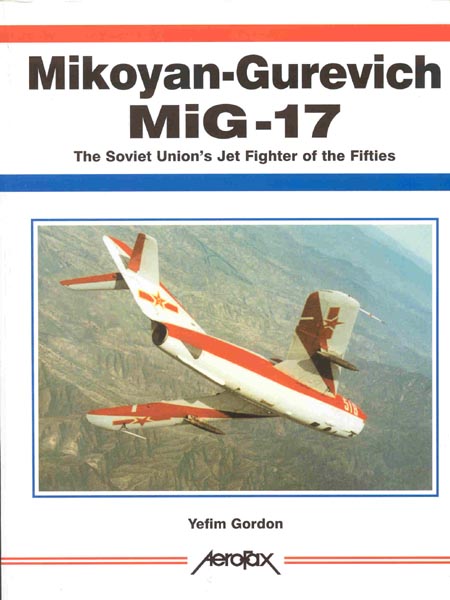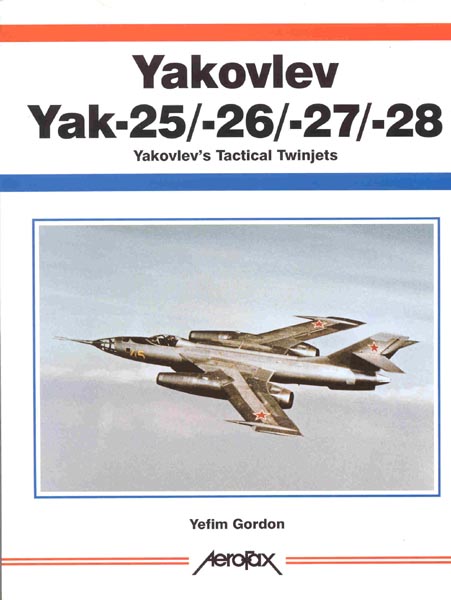SCALEWORLD By Richard Marmo | |
Modelbuilders seem to run to two extremes. On one hand are the serious
modelers …some would say fanatics…who not only want that kit of their
chosen subject to look like the real thing, they want it to be an accurate
representation. At the other end of the scale are those who are perfectly
satisfied as long as the finished model simply looks like the subject
and never mind the finer points of accuracy. In fact, there's a school
of thought holding to the notion that the great majority of those who
build models neither knows what the real thing looks like…nor cares.
The truth is probably somewhere in between. Few of us will ever be
-or want to be- IPMS National Contest 'rivet counters' who spend several
years building a single model. And it's probably true that a fair number
of us are perfectly happy if a model of the object of our desire looks
like the real thing at twenty feet. But most of us? Give us a kit
that's accurate in all the basic areas with a reasonable level of detail
and quality decals and we're happy.
Opinion?
Between it's sheer size, six pusher props and four jets (the classic
'six turning and four burning' description), the Consolidated B-36 has
fascinated modelers for years. Kitwise, there haven't been many. There
was the old Aurora mini-kit that was somewhere around 1/370 scale and
Revell's 1/192 effort. Moving upscale, Sutcliffe produced a 1/72 vacuform
B-36 that was both big and to a standard scale. To say that it was
a challenge to build was an understatement. It was also substantially
inaccurate to boot. Then along came Monogram with their 1/72 injected
styrene kit which was a quantum improvement. Totally accurate it wasn't,
mainly because of a flaw at the wing/fuselage centerline intersection
that was virtually uncorrectable. But it qualified as a good B-36 model.
There was one major sticking point where it's size was concerned. At
39 inches in wingspan, finding display space for the finished model
was a major problem. If only someone would make a B-36 to a smaller
standard scale. Well, someone has.
 HOBBYCRAFT CANADA has
released a series of three 1/144 scale B-36 kits. The B-36B and B-36D
kits reviewed here, along with a GRB-36 Ficon that I haven't seen.
Price of each is $29.95. HOBBYCRAFT CANADA has
released a series of three 1/144 scale B-36 kits. The B-36B and B-36D
kits reviewed here, along with a GRB-36 Ficon that I haven't seen.
Price of each is $29.95.
Each kit comes packed in a very sturdy end flap box with what appears
to be a photo that's been artistically enhanced on the top and profiles
of the fuselage and wing on the bottom as an aid to color scheme and
markings. You'll also find a photo of the cover of Dennis Jenkins'
book "Magnesium Overcast". I would definitely recommend acquiring
a copy of his book before tackling these kits. It's available from
better bookstores or direct from SPECIALTY PRESS (https://specialtypress.com).
You might also find the CD-ROM "B-36: Saving The Last Peacemaker
by Ed Calvert, Don Pyeatt and Richard Marmo" to be useful as well.
You can order it direct from SCALE PUBLICATIONS (https://scalepublications.freeyellow.com).
 As for the kits themselves,
all parts are crisply molded in light gray except for the clear which
are equally well done. Primary dimensions are dead on, being within
1/10 of an inch. Parts gates are generally small. Surface detail is
very nice indeed, with all scribing being delicate and recessed. Though
I only spent a limited amount of time dry-fitting various components,
everything seems to fit well with no apparent gaps or other problems. As for the kits themselves,
all parts are crisply molded in light gray except for the clear which
are equally well done. Primary dimensions are dead on, being within
1/10 of an inch. Parts gates are generally small. Surface detail is
very nice indeed, with all scribing being delicate and recessed. Though
I only spent a limited amount of time dry-fitting various components,
everything seems to fit well with no apparent gaps or other problems.
One thing I particularly liked was the fact that the B-36B kit includes
complete upper gun turret bays with doors that can be posed open. In
the case of the B-36D kit, there are no gun bays so you simply install
the doors in their closed position.
The decal sheet is very nice with all designs crisp, clean and in
register. One peculiarity lies in the fact the locations for the observation
bubbles are flashed over. Black discs are provided on the decal sheet
to place on those locations, the clear bubbles then being cemented on
top. Personally, I'd ream out the flash and install the bubbles over
the opening, dispensing with the black discs.
Landing gear looks to be accurate. Props are correct for each version,
meaning round tips for the B-36B and square tips on the B-36D. You'll
also find the various canoes and domes necessary to create an RB-36D,
which is one reason you'll need the references mentioned. Also keep
in mind the fact that the oblique camera canoes located behind the main
radome were only fitted if the aircraft was fitted with a single set
of bay doors. Finally, if you want to build an RB-36D, you'll need
the B-36B kit for the canoes. They weren't included in the B-36D kit.
The instructions make no mention of where the domes and canoes are located.
Beyond that, their location varied on the real aircraft.
Instructions are the now-common all-graphics international style,
a necessary concession to marketing in the European Union. Despite
that, there's room for improvement because they tend to be confusing
in areas. For example, there's no parts map. Since there are parts
in each kit that are not used, it would have been nice to have an illustration
with the unneeded parts grayed out. As just mentioned above, there's
no indication at all as to where the various domes are located or that
they even exist. The instructions will get the model built,
but a little more clarity would've been helpful.
If some of you are thinking that there's a '…but' hiding somewhere,
you're right. The kits are very well done, attractive and appealing.
BUT there's a fly in the ointment… and depending on where you fall in
my opening commentary, it's a big fly.
To put the size of the real B-36 in perspective, consider that it
was designed in such a way that a crew member could "crawl"
into the wing to do maintenance or repairs on the engines while in flight.
He actually didn't do a lot of crawling because he could stand erect
inside the wing root. With a wing that thick at the root, the result
was a rather hefty taper from the wing root to the wingtip. The top
surface of the wing was level, all the way to the wingtip, while the
bottom of the wing tapered from the bottom of the wing root up
til just before the wingtip when it merged into a more sharply slanted
flared wingtip. HOBBYCRAFT reversed the taper so that the bottom
of the wing is level and the top of the wing tapers from root to tip.
There is also no hint of a flared wingtip. What caused this will probably
never be known and really doesn't matter. The wing has additional problems,
including a small hump at the intersection of the wing/fuselage centerline
(which should be completely level) and inaccurate air intakes. The
air intake errors, in turn, throw the nacelle configuration off. That
incorrect hump is also reproduced on the profile drawings on the back
of the boxes.

I've included a photo of the last B-36 being moved at the old Greater
Southwest Airport in Ft. Worth, Texas during the 1970s. Even though
the outer wing panels have been removed, the correct wing taper can
be plainly seen.
Even with the reversed wing taper, incorrect air intakes and related
trickle down problems, it still will build into a nice model and will
look like a B-36 from most angles. Just don't sight down the
fuselage from a head-on position because that's when the errors really
show up.
The bottom line is this: These kits are well done, detailed and have
a good fit. They also have a problem. How much of a problem will depend
strictly on you and what you demand of a manufacturer. Experienced
modelers can perform surgery and eliminate or minimize the reverse taper.
That will still leave all the related problems to deal with. Others
may not consider it to be that big a deal. It's your choice.
If you're trying to build up a reference library on Soviet aircraft,
here's a couple of more volumes to add to your must have list. Both
are AEROFAX books, authored by Yefim Gordon, published by MIDLAND PUBLISHING
and distributed in North America by SPECIALTY PRESS (https://www.specialtypress.com). Keep
in mind that if you order from Specialty Press, there's a $4.95 shipping
and handling fee per order.
 First up is titled
Mikoyan-Gurevich MiG-17, which carries a price tag of $29.95. Utilizing
an 8 1/2" x 11" vertical format, the semi-stiff covers enclose
144 pages of glossy paper, 172 b&w photos, 32 color photos, 10 pages
of color profiles and 12 pages of drawings. First up is titled
Mikoyan-Gurevich MiG-17, which carries a price tag of $29.95. Utilizing
an 8 1/2" x 11" vertical format, the semi-stiff covers enclose
144 pages of glossy paper, 172 b&w photos, 32 color photos, 10 pages
of color profiles and 12 pages of drawings.
The book starts logically with a brief genealogical history that culminates
in the MiG-17. Chapter 2 gives a description of every version in the
MiG-17 family…and you'd be amazed at how many there are. Then there's
foreign production and stories of the MiG-17 at war in such places as
Viet Nam, the Middle East, Uganda and more. Another chapter details
every country to operate the 17, including serial number, version and
remarks wherever appropriate.
Color photos show the MiG in a variety of markings, ranging all the
way from Russia to the Congo. A couple of Pakistani birds in flight
are included, as are shots of Russian and Chinese aerobatic team mounts.
As for the color profiles, a wide variety of national markings are displayed.
Most of the aircraft are relatively bland, meaning about 8 out of 10
are overall bare metal. However, there are enough camouflage schemes
and unusual markings to keep things interesting. For example, a North
Vietnamese MiG in tan-and-green mottled camoflage, a bare metal MiG-17F
in U.S. Air Force markings, two-toned Bulgarian scheme and even more
camouflage schemes on Angolan, Egyptian, Syrian and Polish aircraft.
The book ends up with 12 pages of b&w profiles drawings covering
the different variants of the MiG-17 family.
 Yefim Gordon's second
offering covers a series of Soviet aircraft that I supect many people
have never heard of…or have forgotten about. The series of tactical
twin jet aircraft known as the Yakolev Yak-25/-26/-27/-28. This series
of designs was intended for missions ranging all the way from patrol
interceptor to supersonic tactical bomber, supersonic interceptor and
high altitude reconnaissance. One variation, known as the Mandrake,
utilized a greatly stretched wingspan in an attempt to respond to the
U-2. Yefim Gordon's second
offering covers a series of Soviet aircraft that I supect many people
have never heard of…or have forgotten about. The series of tactical
twin jet aircraft known as the Yakolev Yak-25/-26/-27/-28. This series
of designs was intended for missions ranging all the way from patrol
interceptor to supersonic tactical bomber, supersonic interceptor and
high altitude reconnaissance. One variation, known as the Mandrake,
utilized a greatly stretched wingspan in an attempt to respond to the
U-2.
Using the same 8 1/2" x 11" vertical format, you're given
128 pages, 202 b&w photos and 41 color photos for a price of $27.95.
Besides the in-depth information that's presented in much the same manner
as the MiG-17, appendices detail performance, individual aircraft details
and specifications. There's also 20 pages of b&w drawings…mostly
profiles… 12 pages of color photos and 4 pages of color profiles. All
in all, excellent coverage of an important family of Soviet aircraft
that has been overshadowed to some extent by the better known and (some
might say) more glamorous MiG name.
And that, people, is it for this month. See you in 30 days.
| 







|
 HOBBYCRAFT CANADA has
released a series of three 1/144 scale B-36 kits. The B-36B and B-36D
kits reviewed here, along with a GRB-36 Ficon that I haven't seen.
Price of each is $29.95.
HOBBYCRAFT CANADA has
released a series of three 1/144 scale B-36 kits. The B-36B and B-36D
kits reviewed here, along with a GRB-36 Ficon that I haven't seen.
Price of each is $29.95. As for the kits themselves,
all parts are crisply molded in light gray except for the clear which
are equally well done. Primary dimensions are dead on, being within
1/10 of an inch. Parts gates are generally small. Surface detail is
very nice indeed, with all scribing being delicate and recessed. Though
I only spent a limited amount of time dry-fitting various components,
everything seems to fit well with no apparent gaps or other problems.
As for the kits themselves,
all parts are crisply molded in light gray except for the clear which
are equally well done. Primary dimensions are dead on, being within
1/10 of an inch. Parts gates are generally small. Surface detail is
very nice indeed, with all scribing being delicate and recessed. Though
I only spent a limited amount of time dry-fitting various components,
everything seems to fit well with no apparent gaps or other problems. First up is titled
Mikoyan-Gurevich MiG-17, which carries a price tag of $29.95. Utilizing
an 8 1/2" x 11" vertical format, the semi-stiff covers enclose
144 pages of glossy paper, 172 b&w photos, 32 color photos, 10 pages
of color profiles and 12 pages of drawings.
First up is titled
Mikoyan-Gurevich MiG-17, which carries a price tag of $29.95. Utilizing
an 8 1/2" x 11" vertical format, the semi-stiff covers enclose
144 pages of glossy paper, 172 b&w photos, 32 color photos, 10 pages
of color profiles and 12 pages of drawings. Yefim Gordon's second
offering covers a series of Soviet aircraft that I supect many people
have never heard of…or have forgotten about. The series of tactical
twin jet aircraft known as the Yakolev Yak-25/-26/-27/-28. This series
of designs was intended for missions ranging all the way from patrol
interceptor to supersonic tactical bomber, supersonic interceptor and
high altitude reconnaissance. One variation, known as the Mandrake,
utilized a greatly stretched wingspan in an attempt to respond to the
U-2.
Yefim Gordon's second
offering covers a series of Soviet aircraft that I supect many people
have never heard of…or have forgotten about. The series of tactical
twin jet aircraft known as the Yakolev Yak-25/-26/-27/-28. This series
of designs was intended for missions ranging all the way from patrol
interceptor to supersonic tactical bomber, supersonic interceptor and
high altitude reconnaissance. One variation, known as the Mandrake,
utilized a greatly stretched wingspan in an attempt to respond to the
U-2.






